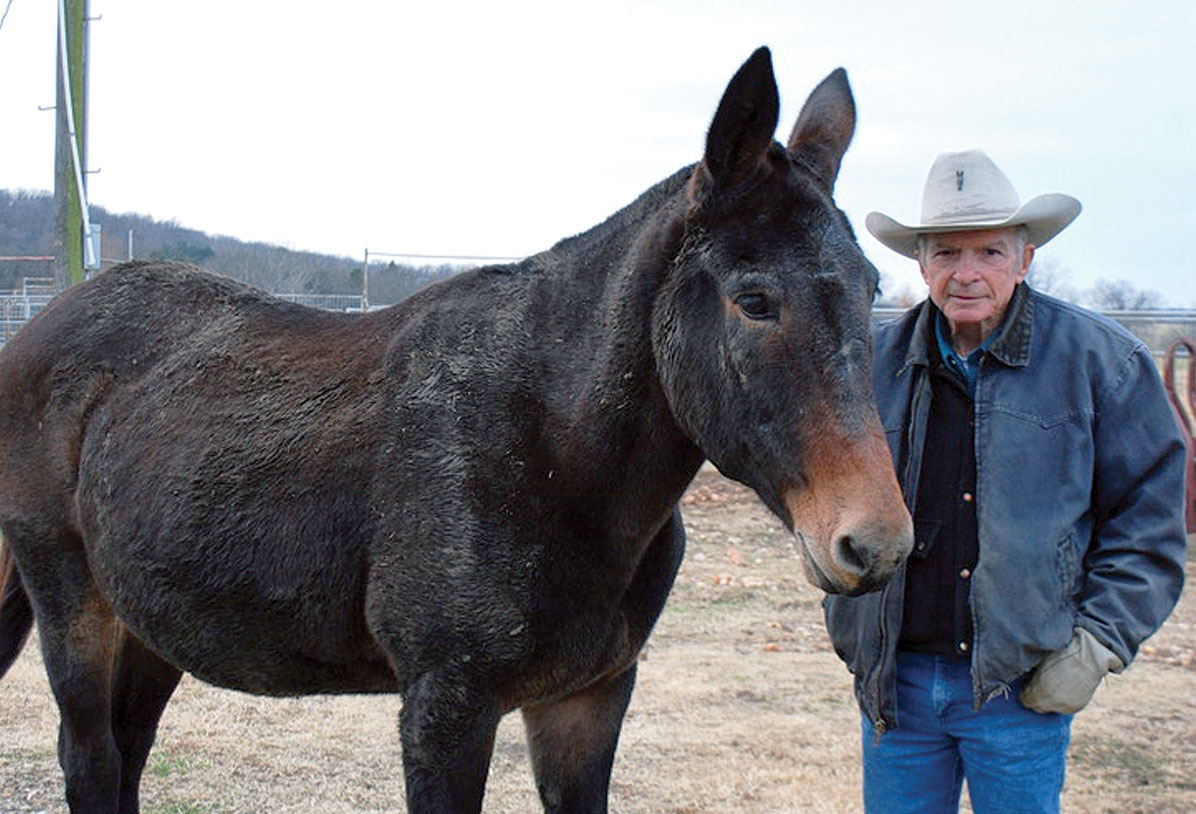
The most common commercial cattle operation in the Ozarks is cow/calf. Some ranchers, on the other hand, prefer a stocker business. Jim and Natasha Hollenback have a stocker cattle ranch in Jay, Okla., that maintains up to 1,600 calves comfortably at a time on 999 owned and 300 leased acres. Jim has a master’s in beef nutrition, while Natasha has a business degree and works as a manager/owner at Cornerstone Station. She is also a full ranching partner, helping with the books and doing whatever needs to be done around the ranch.
Jim and Natasha have two full-time hired hands, necessary for the size of the Hollenback operation. Both of those men are now beginning their own stocker farms. One is Canaan Sherrell, a high school record-setting track athlete, and the other is Jerome Potter, an outstanding high school basketball player who now competes in team roping and bass fishing. The three men work together on whatever that day’s to-do list demands.
“I can’t say enough about these guys,” Jim said. “They are awesome as well as responsible, dependable and dedicated. This operation could not succeed without them.”
No two farmers do things the same way. At the center of the Hollenback operation is a risk management strategy that uses a calculated value of gain to guide Jim in setting a purchasing range for his cattle buyer. The formula is based upon the difference between the projected selling price and purchasing price divided by the difference between the projected selling and purchasing weights. The resulting number allows Jim to determine a value of gain in which he compares to his cost of gain. This information is then used to determine which weight of cattle to purchase. As soon as the cattle are purchased, they are put into a risk management plan that coincides with their month of delivery.
“This type of operation isn’t for everyone but gives me greater control over profits in a way that works best for me. Futures and options are tools to help minimize risk and provide stability in fluctuating markets,” Jim said.
The process begins with Jim giving buyers the range of price and weight of the calves he wants purchased. He does not designate color or the number of calves per order.
Jim’s buying season is summer to late fall, typically once a week at various sale barns until the desired target number for that year is reached.
A transport contractor brings the calves from the auction to the ranch where they are placed in a small covered pen. Most are just weaned and therefore prone to restlessness and dehydration, which results in fatigue possibly compromising their immune systems. The first day they are given free choice water and high quality local Bermuda hay to counteract dehydration and excessive movement.
The next morning the calves are processed, which includes castrating, dehorning, ear tagging and applying a health protocol system that varies according to season, specific conditions and risk level. Ear tags contain an ID number that correlate to computer stored information for each calf used in making future decisions.
On day two and continuing for an additional three to four days, calves are fed a starter ration whose composition is determined by the group size and weight in accordance to NRC requirements for specific classes of animals. The ration is intended to help calves become accustomed to rations while simultaneously training the cattle to eat from a feedbunk. During this time, they are placed in a grass trap which continues to limit their movement and acclimate them to their new surroundings while trying to minimize stress.
Next the calves are placed in their “home” pasture where they are now fed a total mixed ration with trace minerals, roughage and a higher energy level supported by ingredients such as corn silage, corn and dried distillers grain. Calves may be added until the group reaches the optimum size for a particular pasture. The calves graze continually with little if any supplemental hay needed and are fed a ration once a day unless an unexpected need arises, such as severe weather conditions.
“I had a professor at Oklahoma State named Gerald Horn who explained the four keys to a successful stocker operation: buy low, sell high, keep the calves alive and make them gain. These keys are as true as they are obvious,” Jim said.
Another way to describe the keys is for the rancher to provide calf comfort by putting them in a good, low stress environment while providing a well-balanced ration and clean water so they remain healthy. Clean water on the Hollenback spread is provided by wells, one up to a thousand feet deep.
In spite of best efforts, purchased calves sometimes suffer from what used to be called shipping fever or bovine respiratory disease. The disease is caused by the restlessness, dehydration and fatigue of weaning and shipping.
“Stress is the trigger. Those whose immune system cannot handle the stress can come down with the illness,” Jim said. “Cattle that require treatment are not isolated but returned to their home pen rather than increasing stress of isolation. Those calves are simply treated with antibiotics and carefully monitored.
Jim and Natasha have four children Jimmy, 25; Hadlee, 17; Max, 9; and Keeley, 7.
The Hollenbacks plan on expanding their stocker operation as land and resources allow.







